- Online Payment

WHAT IS FDNS AND WHY ARE THEY DOING SO MANY OFFICE SITE VISITS?
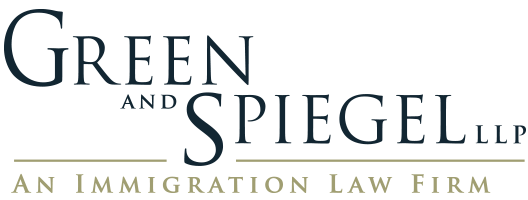
smt3 print icon Print This Page
by David Spaulding | Jul 24, 2019
The Office of Fraud Detection and National Security (FDNS) has been around for fifteen years but the first time most companies and attorneys hear of it is when officers show up to conduct an inspection on nonimmigrant worker visas. Their site visits are unannounced and often send companies scrambling to figure out who the officers are, what their duties and authorities are, what the company’s responsibilities are, and how best to react. More challenging still is that many of the site visits are at what the government calls “end client locations,” which is to say that the person holding the visa in question does not work at the location where the corporate officers are based.
I served 23 years as an immigration officer and the last twelve of them were with FDNS. Seven of those years were as an FDNS supervisor and manager.
One of the most challenging aspects of that work was introducing FDNS. We spent substantial time educating folks about what our office did and the ways that we were distinct from the law enforcement agencies that we worked so closely with. So, what is it that FDNS does and how does it relate to the daily operations of petitioner – employers?
FDNS conducts inspections and administrative investigations on behalf of United States Citizenship and Immigration Services (USCIS). It is with USCIS that a potential employer of a nonimmigrant visa holder files their petition. FDNS conducts both random and targeted site visits to determine whether the underlying petition filing was valid and the petitioned-for employee is being employed in a manner and under conditions consistent with that filing.
These site visits have become more common and promise to grow in frequency in the next year so, what is the best way for an employer to respond?
The first question that needs to be answered is why the officers are there. It is most likely that they are following up on a petition that either the company or one of its contractors has filed, but it could also be that their investigation involves a company employee and not the company, per se. Additionally, FDNS conducts verifications for the U.S. Department of State to verify work offers for visa applicants overseas.
Most of the site visits relate to petitions filed by the company or a contractor and it is in everyone’s interest for FDNS to leave the site with all of the information they need to quickly close up their inquiry with minimal impact on the company’s operations. The officers will have a list of questions and documents and, though their inquiry can range farther than the prepared questions, it focuses on three general areas: scope of work, compensation, and control. The officers need to document what the employee does, how much they are paid, and to whom they report.
For petitioner organizations, all this information should be readily available and for end clients, obtaining a summary so that the site visits do not disrupt business more than is necessary can be helpful. At Green and Spiegel, we have significant experience with such site visits and can help companies craft contracts and policies which meet FDNS’ needs in the most efficient and cost-effective way. The goal is to minimize business disruptions while meeting responsibilities to clients and the government. A little bit of preparation and attention can have significant positive effect on the outcome.
We are in a good position to help clients prepare for and react to FDNS site visits. If we can be of service to you, contact our compliance and regulatory enforcement team at Green and Spiegel U.S. .

David Spaulding is a general immigration law practitioner and Green and Spiegel’s Compliance and Regulatory Practice Counsel.
View all posts
Recent Posts
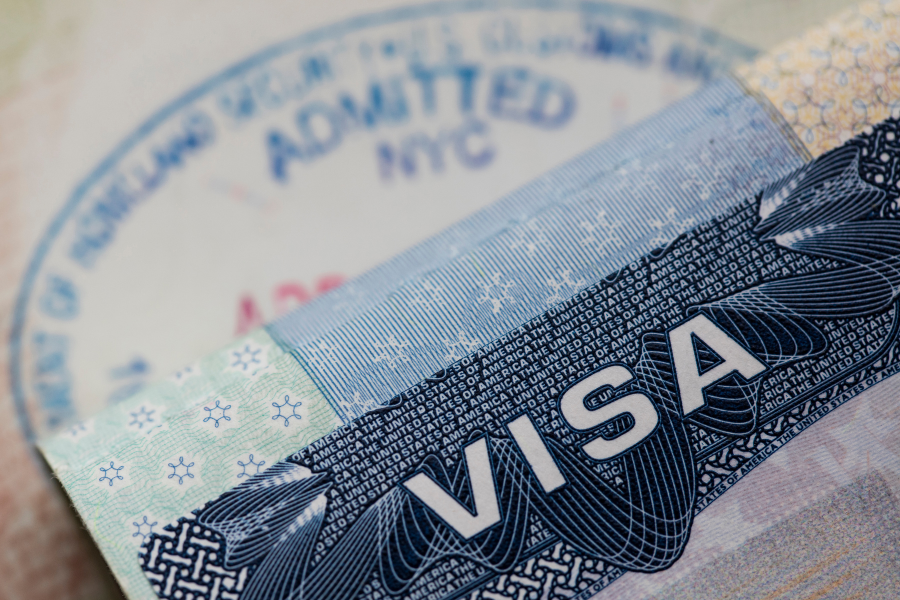
USCIS Announces Changes to the H-1B Program for 2024
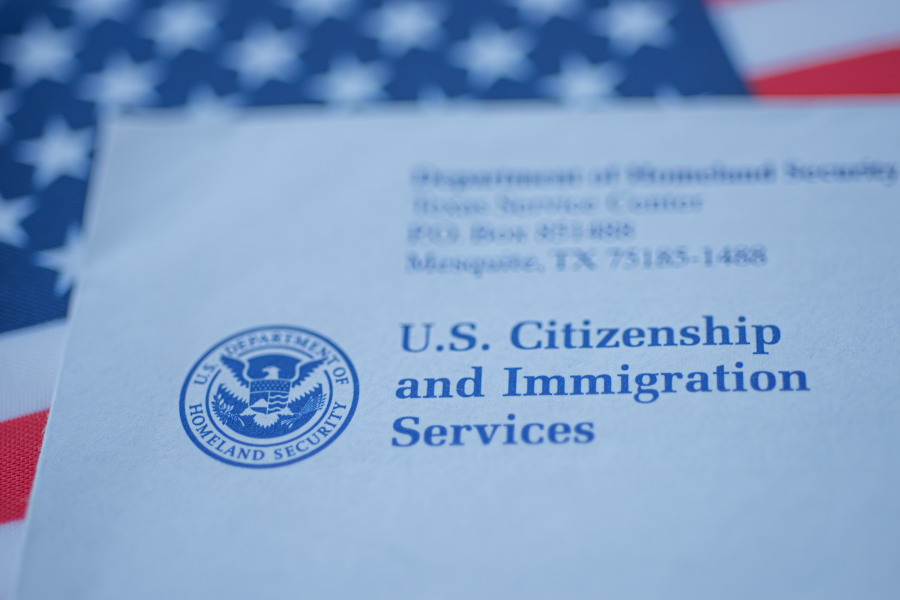
USCIS Increasing Fees as of April 1, 2024

Potentially New Schedule A Shortage Occupation Designations
Pin it on pinterest.
Curran, Berger & Kludt
Immigration law
Fraud Detection and National Security (FDNS) Site Visits
USCIS started the Administrative Site Visit and Verification Program in July 2009 as an additional way to verify information in certain visa petitions. Under this program, Fraud Detection and National Security (FDNS) officers make visits to collect information as part of a compliance review. Most recently, F-1 STEM OPT trainees have been added to the list of those who are included in this program.
Types of petitions subject to site visits
- Religious worker petitions (before and after adjudication)
- H-1B petitions (after adjudication)
- L-1 petitions (after adjudication)
- F-1 STEM OPT Trainees
What is a compliance review?
A compliance review verifies whether petitioners and beneficiaries are following the immigration laws and regulations that are applicable in a particular case. This process includes researching information in government systems, reviewing public records and evidence accompany the petition, and interviewing the petitioner and beneficiary. It also includes conducting site visits.
Participating in a site visit is voluntary, but strongly encouraged
At any point, if the petitioner or beneficiary expresses an unwillingness to participate, the site inspector will terminate the visit. The inspector will complete the report using the data available and indicate that the site visit was terminated at the request of the petitioner or beneficiary. The compliance review will include a follow-up with the petitioner and beneficiary by phone, fax or email.
How site visits are chosen
FDNS conducts site visits on randomly selected petitioners after USCIS adjudicates their petitions, and on all religious worker petitioners before adjudication.
How employers should prepare for a potential site visit
Before a site visit: Employers should be prepared to present any information originally submitted with the petition. The site inspector may also request additional information relevant to the petition. During the site visit: Employers should immediately provide any readily available documents and information that the site inspector requests. After the site visit: Employers should provide all additional information requested in any follow-up communication from USCIS.
Why Does Immigration and Customs Enforcement (ICE) Conduct STEM OPT Site Visits?
Program rules authorize ICE to conduct site visits to verify that employers are complying with STEM OPT requirements and meeting the obligations of Form I-983 training plans. In general, ICE will use the visit to ensure that an organization is carrying out a structured and guided work-based learning experience consistent with the regulations and with the specific training plan completed and signed by the organization.
The inspection may include individual interviews with company personnel, a review and discussion of the foreign national’s training plan and its implementation, and a review of his or her skills and degree in relation to the STEM degree. ICE may also request to view F-1 trainee work spaces or receive a tour of the premises.
Consistent with the regulations, ICE may review whether the duties, hours and compensation of STEM OPT trainees are commensurate with those of similarly situated U.S. workers in the company. In doing so, the agency could request that the inspected organization provide details and documentation on how it determines wages for employees. While this type of site visit should focus only on STEM OPT, and is not intended to be used for other workplace enforcement, if evidence of other immigration-related violations is found during the site visit, ICE may address the violation or refer it to the appropriate agency or ICE unit.
Will ICE Notify An Organization In Advance Of A STEM OPT Site Visit?
Typically yes. In general, ICE is required to provide 48 hours’ advance notice of a STEM OPT site visit. However, no notice is required where a complaint has been lodged with ICE, or where the visit is the result of evidence indicating noncompliance with STEM OPT program rules.
The SEVP division of ICE has been sending emails directly to the managers of F-1 STEM OPT trainees with an attached Notice of Site Visit. The SEVP communications contain:
• The date of the scheduled visit;
• A list of STEM OPT F-1 foreign nationals whose training has been selected for inspection;
• A request for a copy of each named F-1 trainee’s Form I-983, Training Plan for STEM OPT Students; and
• A request for other documentation related to the organization’s STEM OPT training program, at ICE’s discretion.
How Should An Organization Prepare Its Personnel For Site Visits?
At each worksite where an F-1 STEM OPT foreign national is being trained, the organization should designate a point of contact, such as an HR or immigration manager, to receive ICE officers. Receptionists and security personnel should be instructed of the possibility of a site visit and whom to contact when an officer arrives. They should be instructed to request the officer’s business card, and advised that officers should not be permitted to tour the worksite or speak to employees before the designated company representative is notified.
STEM OPT trainees and their managers should also be advised about the possibility of an ICE inspection and what to expect during the visit.
Will An Organization Be Able To Correspond With ICE Before The Site Visit? Will It Be Able To Involve Immigration Counsel?
For a routine visit, an organization will likely be asked to submit the requested Form I-983 training plans and related documentation before the site visit. At that time, the organization may be able to obtain further details from ICE, including the specific time of day of the inspection, and its expected scope.
An organization may ask ICE for its immigration counsel to be present during the site visit either in person or by phone. In making the request, the organization should explain that having the company’s immigration counsel present or available by phone will help the employer respond fully and accurately to the officer’s questions and requests for information. Thus far, ICE has permitted attorney presence, but may not consistently do so.
Who Will Conduct The Visit From ICE?
Site visits have so far been conducted by officers from the Student and Exchange Visitor Program (SEVP) unit of ICE. More than one ICE officer may be present. When an officer appears at company premises, personnel should ask to see the officer’s identification and business card. If the designated individual has any concerns about the visitor’s credentials, he or she may call the telephone number on the business card to verify their identity. Personnel should note the officer’s name, title, and contact information for the company’s record of the site visit.
Which Employees In The Organization Should Be Made Available For The Visit? What If An Employee Is Unavailable On The Date Of The Visit?
ICE has thus far requested to speak directly with a company’s immigration manager, managers/supervisors of the selected STEM F-1 trainees, and with the signatory of their Form I-983 training plans. ICE may also ask to meet with the STEM F-1 trainees, though it may not always do so. However, the foreign nationals may be present during the inspection if they and the company so choose. If a company employee selected for an interview is not available on the scheduled date, the company should address the issue with ICE. The agency may request a follow-up phone call or other communication with the employee, or may determine it can complete the investigation with the available personnel.
Should A Company Representative Accompany The ICE Officer During The Site Visit? Should The Representative Take Notes?
Yes, a company representative should be present throughout the site visit. ICE may decline a company representative’s request to be present during individual ICE interviews with managers and other personnel, but the representative should remain available.
During the visit, the representative should take detailed notes, including the name, title and contact information of each officer; the names and titles of individuals the officer interviews; the questions asked during interviews; any company documents provided to the officer; the worksite areas visited by the officer; and any photographs taken by the officer. If company documents are provided to ICE, the company representative should be sure to list the documents provided and retain copies. If the officer takes photographs of the premises, the representative should ask for copies of them.
An Organization Has A Policy Against Allowing Unaffiliated Individuals To Tour Or Photograph Its Premises. If The Officer Asks To See Or Take Pictures Of The Worksite, Must We Cooperate?
It is recommended that employers comply with reasonable requests to examine and photograph the employer’s premises or work area. However, if the company has a strict policy against tours or photographs, it should explain that to the officer.
What Kinds Of Questions Can Be Expected From The ICE Officers?
Managers and supervisors should be prepared to answer questions on the following:
• The information provided in the trainee’s Form I-983;
• The nature of the trainee’s role in the organization;
• How the role relates to the trainee’s degree and academic program;
• Why the trainee is qualified for the role;
• What qualifications managers look for when hiring for similar positions;
• The nature of the manager’s supervision and training; and
• Whether the trainee is placed at a third-party work site.
If An F-1 STEM OPT Trainee Is Placed At A Third-Party Site, Could ICE Conduct A Visit At That Site?
Employers are permitted to place F-1s on STEM OPT at client and customer work sites, provided that all STEM OPT training obligations are met. The visit could take place at the third-party worksite. If the company has placed a STEM F-1 offsite, the company should communicate with its vendors and/or clients to discuss the possibility of an ICE visit.
In offsite placement scenarios, ICE officers are likely to ask questions about the employment relationship between the organization and the STEM F-1 trainee, in order to verify that the organization is supervising and training the foreign national in a manner consistent with STEM OPT program rules.
How Long Will The Site Visit Last?
The visit should generally last from 1 to 1.5 hours. The length of the entire ICE site visit will vary by how many foreign nationals are selected for the investigation, as well as how much company information (including, in some instances, requests to view work spaces or for a tour of the premises) is requested by ICE.
What Happens After A Site Visit Is Completed?
If as a result of the inspection the agency determines an employer must submit updated or corrected information, ICE will generally request that information in writing from the employer.
In some cases, if officers were not able to speak to everyone they deemed critical for the investigation, or obtain all of the sought information, they may engage in follow-up communication with the organization.
What Are The Penalties For Noncompliance With STEM OPT Rules?
The Form I-983 provides notice of some potential enforcement actions for STEM OPT noncompliance, including termination of the student’s STEM OPT employment authorization. Thus far, it is not clear what level of violation would trigger such action by ICE.
- Advertisement

- Publications
- Awards & Recognition
- Kellyann Everly
- Maridex Abraham
- Erika Dixon
Tips For Fraud Detection & National Security (“FDNS”) Site Visits
- Ensure all reception, security personnel, and HR employees understand what an FDNS visit is, and adheres to an FDNS visit plan. It is recommended that one individual is designated as the primary contact to respond to an FDNS visit, and one alternative contact. Reception should immediately contact the organization’s designated contact if an FDNS investigator or any other government investigator arrives at a worksite.
- Request identification from the officer/investigator (or a business card) and take down all information in the event a follow-up is necessary (e.g. date, location, agent’s name, badge number, agency, telephone, email, reason for visit, records requested, individual requesting to interview, etc.).
- Determine whether it is an FDNS visit (rather than an Immigration and Customs Enforcement matter, Wage & Hour matter, etc.). It should be noted that FDNS site visits are generally related to H-1B and L-1 petitions, distinguishable from Immigration and Customs Enforcement (“ICE”) visits, which may involve I-9 worksite audits.
- USCIS and FDNS take the position that the submission of an H or L petition by an employer constitutes a knowing waiver of the Fourth Amendment right to privacy and therefore a subpoena is not required to complete a site visit. While this position remains untested, since FDNS investigators appear to be asking questions from a standard script for now, we recommend cooperation with FDNS officers.
- FDNS investigators typically ask to meet with the foreign national and a company representative (e.g. HR or a supervisor or manager). The questions should be limited to the facts presented in the H or L petition, including job title, job duties, salary, qualifications, work location and payment of fees. Ensure that these individuals are familiar with the process and questions they may be asked about the H or L petition. Visits may be related to a pending or an approved H-1B or L-1 petition.
- If you are unsure of an answer to a question or if the questions do not reasonably relate to the H or L petition, ask to respond at a later date so you can verify the answer rather than invent a response. Under no circumstances should one guess or provide inaccurate information.
- It appears that the FDNS investigators are assigned to verify information, and primarily work from a checklist of standard questions with no independent authority or decision-making capability. As mentioned above, they will confirm whether a foreign national is working at the listed location, doing the work described in the H or L petition, earning the salary indicated in the petition and what their educational qualifications are. They may take photos to confirm the employment location, but should not ask to search the workplace. FDNS uses this information to assist USCIS with developing a fraud detection database.
- Employers should insist that at least one individual (preferably the designated contact) accompany the investigator at all time. The officer should not be permitted to wander around the company premises. Employees should not be interviewed alone, and an HR or company representative should be present at all times. Be sure to meet in a conference room and not in an open area. Take detailed notes during any interview and forward the details to us.
- To prepare for an FDNS visit, conduct your own internal audit of H-1B and L-1 petitions to ensure that H and L employees’ job duties, work locations and salary are consistent with the petitions that were filed with USCIS, and that all Public Disclosure Files are up-to-date.
Typical questions from FDNS investigators during site visits
Questions for the company representative, (hr manager, general counsel).
General questions about the employer
- What is the name of the petitioner?
- How many employees does the employer have in the United States?
- How many employees does employer have worldwide?
- How many employees are full-time and how may are part-time?
- How many employees are employed by this division?
- Is this the corporate headquarters?
- Please provide a list of the employer’s office locations throughout the United States.
- What is the employer’s ownership structure?
- What are the employer’s hours of operation?
- How does the employer recruit for positions?
- Did you conduct layoffs recently? How many employees were laid off? What was the reason for the downsizing?
- Please provide evidence of the employer’s ongoing business operations, e.g. quarterly wage reports.
- What is your annual revenue?
- What is your budget?
Immigration policies and practices
- Does the employer regularly file I-129s and I-140s?
- What is the employer’s green card policy?
- Do foreign nationals pay for their visas?
Verification of petition
- Did the employer file this petition?
- Did [signatory] sign this petition? Did he/she have authority to sign/file the petition? Do you recognize this as his/her signature?
- Have you met the foreign national who is the beneficiary of this petition?
- What position was the foreign national hired into?
- Is he/she currently working in that position?
- What is the foreign national’s current job title?
- What does this job entail?
- What duties does the foreign national perform in a typical day?
- Are the job duties listed on the petition the job duties the foreign national actually performs?
- How many people does the foreign national manage/supervise?
- What was the foreign national’s employment start date?
- Is the job full-time or part-time? How many hours per week?
- Which department is the foreign national assigned to?
- What is the foreign national’s current work address?
- What is the foreign national’s base salary?
- Is the beneficiary on U.S. payroll?
- Do you have evidence of the beneficiary’s salary, such as W-2s?
- Is the beneficiary compensated from other than corporate funds, i.e., is the beneficiary moonlighting? Do you have any knowledge of such activities?
- Does the foreign national pay taxes in the United States?
- Where did the foreign national live before coming to the United States?
- What is the foreign national’s educational background?
Relationship between petitioner and beneficiary
- Does the beneficiary have an ownership interest in the petitioning company?
- Is there a familial relationship between the beneficiary and the petitioner?
- Is there a familial relationship between the beneficiary and the person signing the petition?
H-1B questions
- The prevailing wage listed on the LCA is [amount] per year and the I-129 form lists a starting salary of [amount] per year. What is the salary you are paying the foreign national?
- On the LCA, the position title is [title]. Is that the job you described to us?
- How many employees does employer have on H-1B visas?
- How many H-1B petitions has the employer filed? Since company’s inception? In the past year? In the past five years?
- How many H-1B foreign nationals have occupied the foreign national’s position in the last five years?
L-1 questions
- Which entity did the foreign national work for before transferring to the United States?
- Where is that entity located?
- Is that entity listed on the corporate relationship documentation in the L-1 petition?
- What is the relationship between the U.S. entity and the transferring entity?
- When did the foreign national join the organization?
- How long was the beneficiary employed overseas prior to his/her transfer to the United States?
- What job title did the foreign national hold prior to transferring to the United States?
- Is the beneficiary being transferred to a newly created position or to an existing position in the United States?
- Is the beneficiary replacing a U.S. worker?
- Is the foreign national truly an executive or manager, as opposed to an employee with specialized knowledge?
- What percentage of the employer’s L-1 workers are from [foreign country]? How many foreign nationals are currently in the U.S. on L-1s for the employer?
- Where does the L-1 beneficiary stay while in the United States? (pertaining to intermittent L)
- What is the source of payroll? Is he/she paid overseas?
- How many L visa holders does the employer sponsor?
- How many L extensions does the employer file annually?
Questions regarding consulting firms
- Does the foreign national work at this location?
- Is that a third party location?
Relationship between petitioner and its immigration counsel
- How many petitions does [law firm] file for employer on an annual basis?
- What is [law firm]’s relationship with the employer?
- What work does [law firm] do for you?
- Why do you use [law firm]?
Document requests
- Quarterly wage reports
- Foreign national’s W-2 or paystubs
- Foreign national’s Form I-9
- Organizational chart
Questions for the Foreign National
- What is your job title?
- What are your responsibilities?
- What was your employment start date with the employer?
- Where is your job located?
- Are you doing the job you were hired to do?
- What are the requirements of this position?
- How many positions like yours are there at employer?
- What is your educational level?
- Where did you go to school?
- What was the size of the school?
- Is this your degree?
- The grades on the transcript are out of 100?
- You have a [type] degree?
- You got your degree in what field of study?
- When did you graduate?
- Are you working full time?
- When did you start?
- Has employer required you to pay any fees associated with the H-1B petition?
- How did you come to apply to employer for a job?
- Did you quit your previous job? Why?
- Did you actually work for your prior company?
- What did you do between school and work?
- Did your previous employer file an I-129?
- Did you post your resume on Monster?
- Is this company considered attractive as an employer?
- What is your current address?
- Do you have family here?
- Does your spouse work?
- When did you get married?
- What is your spouse’s current status?
- Please provide tax filings for the past year and your passport.
Questions for the Foreign National’s Manager
- Are all [position title]s working in your group?
- What does your unit do?
- How many people in your unit do that? In terms of staffing, is that a practical number?
- Nonimmigrant Visas
- Immigrant Visas
- Employer Compliance
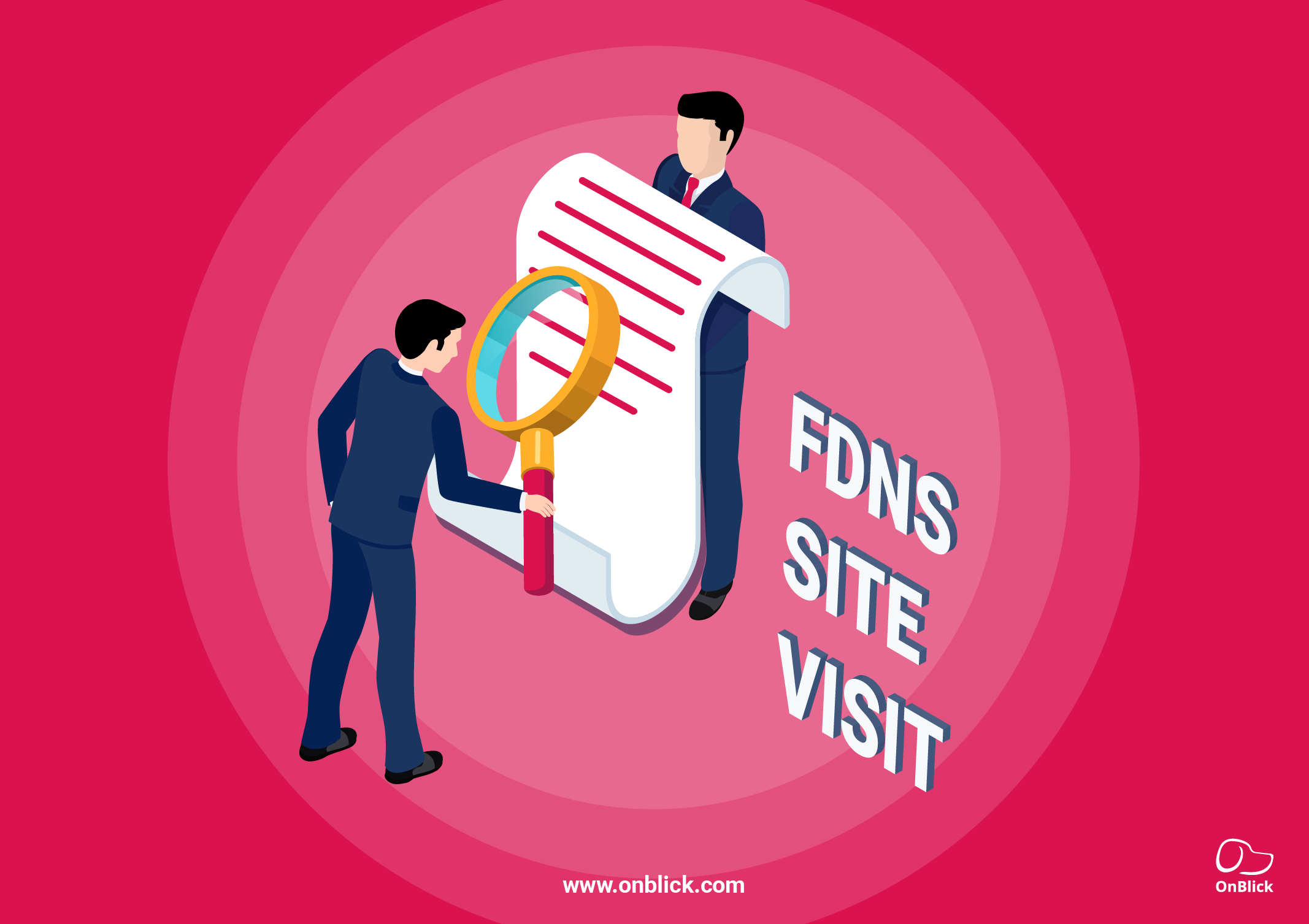
How To Prepare For FDNS Site Visits?
Is your organization prepared for an fdns site visit.
Don't worry if it's not. We are here to enhance your awareness about FDNS and keep you audit-ready.
What is FDNS?
With an increase in immigration, the US has also witnessed an increase in the misuse of their immigration laws. So, USCIS set up an office named Fraud Detection & National Security (FDNS) in 2004 (which later became a Directorate in 2010) to ensure the immigration compliance of organizations.
FDNS conducts random site visits to organizations and collects information about the organization and its employees. The main objective of FDNS is to detect and eliminate fraud from the immigration process.
It should be noted that FDNS site visits are generally related to H-1B and L-1 petitions and are different from Immigration and Customs Enforcement (ICE) audits of your Form I-9s.
How does the FDNS function?
An officer from the FDNS may visit your organization with or without any prior information . The officer will verify the details of your organization presented in the visa petition before the site visit.
FDNS site visits are to confirm whether a foreign national is working at the listed location, doing the work described in the petition, earning the salary indicated in the petition, hold the educational qualifications defined in the petition, and so on. In other words, FDNS site visits determine whether the petition filing was valid and the beneficiary is being employed in a manner and under conditions consistent with that filing.
During an FDNS site visit:
According to USCIS , the primary tasks of an FDNS officer during a site visit can be as follows:
- Verify the information, including supporting documents, submitted with the petition;
- Verify that the petitioning organization exists;
- Review public records and information on the petitioning organization;
- Take photographs of the work location;
- Review documents;
- Interview personnel to confirm the beneficiary’s work location, physical workspace, hours, salary and duties; and
- Speak with the beneficiary.
The site visit would usually last for thirty minutes or more during which the officer would document all the information provided. The documented information would be reviewed to verify that all the information provided is accurate and is not subjected to any misuse. FDNS uses this information to assist USCIS with developing a fraud detection database. At times, the FDNS officers could also ask you to email your employees’ documents like the copies of the last three pay stubs and latest Form W-2, beneficiary’s current job title and duties, beneficiary’s present work location along with a copy of the LCA for that location (if the location has changed), or a letter from the end client attesting to the beneficiary’s employment at the site (if the beneficiary is working for an end client).However, you need to verify that the email address and the identity of the officer are legitimate as there have been incidents of scam. You have to make sure that the communication is made with the officer’s official USCIS email address.
After an FDNS Site Visit:
After completion of the inspection, the officer will submit a Compliance Review report to the corresponding supervisor with all the documented information. USCIS reviews this report for any indicators of fraud or noncompliance. FDNS could refer the case to U.S. ICE for criminal investigation. A NOIR ( Notice of Intent to Revoke )may be issued to the employer if USCIS comes across any discrepancies in the data submitted.
How to prepare for an FDNS site visit?
Preparing your organization for these random site visits is of utmost importance. Here are a few tips for you:
- All the employees of your organization should be well aware of their roles and responsibilities.
- Be sure that you provide accurate information to the FDNS officer . In case, you need time to research or verify any particular information you can ask the officer for additional time.
- Conducting an internal audit of your organization would help analyze the employees’ awareness.
- Even when the site visits are voluntary, it is advisable to take part and answer all the questions.
- The most important of all is to make sure that supporting documents of all the petitions are available to access when requested by an officer.
The supporting documents that an officer may ask during a site visit include a copy of the approved H-1B /L1petition, payroll records or pay stubs of the employee, and the certified LCA.
Many employers find it hard to handle these random FDNS site visits as there is no awareness of the questions that could be posed. So, they approach their attorneys for assistance. But there are certain cases where attorneys panic during these visits, hence resulting in discrepancies in the information provided to the officer.
It is then a software like OnBlick comes into the picture. OnBlick digitizes all the employee and organizational documents, hence making these accessible with just a few clicks. It instantaneously creates and saves Public Access Files for every LCA uploaded. The best part about OnBlick is that it maintains all the documentation related to your nonimmigrant workers under one system. You no longer need to panic or worry about finding all the supporting documents when an FDNS site visit happens. OnBlick provides a questionnaire that prepares you for the FDNS site visits and helps avoid revocation possibilities.
FDNS site visits could happen anytime, but you don’t need to worry since your compliance is OnBlick’s assurance .
Click on the link below to download "Do's and Don'ts during an FDNS site visit
Download Document
File, Track & Manage Your Immigration Cases Under One Platform
- Employment-Based Immigration
- Family-Based Immigration
- Global Visas
- Work Site Compliance
- Healthcare Specialty Practice Group
- Education Specialty Practice Group

FDNS Site Visits
Written by Colleen F. Molner, Esq., Partner , N.C. Board Certified Immigration Law Specialist.
The U.S. Citizenship & Immigration Services (USCIS) created the Office of Fraud Detection and National Security (FDNS) in 2004. It is funded with the $500 Fraud Prevention and Detection fee that petitioning employers must pay when initially petitioning for an H-1B or L-1 worker.
The stated mission of the FDNS is to detect, deter and combat immigration benefit fraud and to strengthen USCIS’ efforts ensuring benefits are not granted to persons who threaten national security or public safety. The FDNS employs site inspectors who conduct worksite visits at U.S. companies and other entities that employ foreign workers through the H-1B and L-1 visa program. In 2009, the FDNS launched the H-1B assessment program to conduct a specific audit of the H-1B program.
The following is information that employers should know about FDNS’s use of the H-1B assessment program and how to prepare for a site visit.
Many of the FDNS H-1B site visits are unannounced, and they may occur at the H-1B employer’s principal place of business and/or at the H-1B nonimmigrant’s work location as indicated on the Form I-129. The FDNS officer will typically request to speak with the employer’s representative who signed the Form I-129; however, since the site visit is unannounced and the employer’s representative may not be available, the FDNS officer can ask to speak to another employer representative, such as a Human Resources Manager. The FDNS officer may also request to speak with the H-1B employee at some point during or after the worksite visit.
The H-1B worksite visits typically last for less than one hour. During the site visit, the FDNS officer will normally have a copy of a specific H-1B petition that was filed and will verify information contained in that petition. Specifically, the FDNS officer will ask the employer’s representative for information about the company, including, but not limited to:
- The employer’s business, locations, number of employees and recent layoffs;
- The employer policies with respect to immigration matters including repayment agreements, H-1B hiring policies and green card policies;
- Details about the specific H-1B petition being investigated including job title, job duties, work location, salary, work schedule, dates of employment, etc;
- Qualifications of the H-1B employee including education, work experience and prior immigration history;
- Information about the number of H-1B petitions that the employer has previously filed; and
- Information about the employer’s immigration counsel.
The FDNS officer may also request to review a copy of the H-1B nonimmigrant’s most recent paystub, last Form W-2, and a copy of the company’s tax returns, quarterly wage reports, and/or other company documentation to evidence that it is a bona fide business. In addition, the FDNS officer may request a confirmation that the signature on the Form I-129 petition is genuine. However, FDNS officers typically do not request to review the Labor Condition Application (LCA) Public Access File.
After speaking with the employer’s representative, the FDNS officer may request a tour of the employer’s facility, and they may take photographs of the facility. The officer may also request to speak with and interview the H-1B beneficiary, at which time the officer may ask about their job title, job duties, responsibilities, employment dates, position location, requirements for the position, their academic background and previous employment experience, their current address and information about their dependents as applicable.
The FDNS officer may also request to speak with a colleague or manager of the H-1B beneficiary to verify the same information about the H-1B worker. After conducting the interviews and receiving any requested documentation, the FDNS officer will conclude the site visit.
Although many of the H-1B site visits are unannounced, FDNS officers will not typically reschedule a site visit, and the employer and designated company representative should comply with the FDNS officer’s requests at the time of the visit, if possible. The employer can request that its immigration attorney be present during the site visit, but FDNS officers will not typically reschedule a site visit for when an attorney will be available. Instead, FDNS officers allow counsel to be present by phone if requested by the employer.
If the beneficiary has been placed at a client site not controlled by the petitioning employer, the petitioning employer should notify the end user client about the current FDNS H-1B assessment program and the possibility of a site visit. If there are multiple companies between the H-1B employer and the end user, the end user should be made aware of the identity of the H-1B employer and review the terms of the assignment. The petitioning employer should request that the end user company contact the employer at the beginning of an FDNS site visit so that the employer and/or its designated company representative can participate either in person or by telephone.
To prepare for and respond to an FDNS H-1B site visit, consider:
- Designate a company representative as the primary person to respond to an inquiry by an FDNS officer. Additionally, employers should select an alternate contact in case the primary contact is absent. Employers should also alert their receptionists, security guards and corporate counsel of the possibility of an unannounced worksite visit and everyone who might be involved in a worksite visit should be educated as to what to expect and how to react should one occur.
- Employers should conduct their own internal review of the employment of all of their H-1B/L-1 workers to be sure that their job duties, work sites and salary are consistent with the petition the company filed with USCIS. In addition, employers should review the Public Access File for each H-1B worker to be sure that it contains all of the documents required by the regulations that pertain to the Labor Condition Application (LCA), and to verify that the company is complying with all representations made in the LCA.
- Request the name, title, agency and contact information for the site investigator (i.e. a business card). The company representative should also not speak with government agents or contractors without a witness present.
- Retain complete copies of the I-129 petitions and supporting documents in a confidential file maintained by the designated company official, and review this information prior to the meeting with the officer. It may also be beneficial to provide copies of the I-129 petition and supporting documents to the beneficiary relating to the nature of the job opportunity, terms and conditions of employment and the beneficiary’s education and prior work history.
- If the FDNS officer requests information about the employer and the employer cannot provide accurate information without further research, the employer should indicate this to the FDNS officer and not “guess” about any information provided during the visit. The employer may also indicate that they will follow up with the FDNS officer to provide accurate information after such information is obtained.
- The company representative should accompany the FDNS officer during their review of the facilities and request to be present during the interviews of any of the company’s employees.
As always, please do not hesitate to contact Garfinkel Immigration Law Firm at 704-442-8000 or via email with any questions.

What Are Your Rights When There is a USCIS Site Visit for an H-1B?
The USCIS Fraud Detection and National Security Directorate (FDNS) conducts unannounced site visits to ensure compliance with various immigration programs. While USCIS has multiple units for detecting fraud, including on the family based side, FDNS is specifically tasked with conducting compliance-review for special immigrant religious workers (before and after adjudication), H-1B workers (after adjudication), L-1 workers (after adjudication), and EB-5 investors (before adjudication. This article will focus mostly on H-1B as that tends to be the majority of the visits.
FDNS officers typically show up unannounced at the petitioner location and/or the worksite of the H-1B worker and tend to not only ask questions during the visit, but will follow up with a list of documents and questions after. They tend to have absurd requests for a timeline, including demanding a response the next day, and the list of documents tend to go well outside the regulatory or statutory scope of the H-1B and tend to go outside of the specific petition for the beneficiary. Often times they will ask for documentation for all employees. FDNS is designed to be high stress and lead you to cooperation. However, they have been known to take only certain facts to present to USCIS or put you in a pressure situation where you mistakenly answer something wrong. Further, we have seen an increase of USCIS using information from an H-1B site visit in the I-485 interviews leading to issues with the I-485. The good news is that as an individual and as a company, you have rights in these proceedings, and it is important to understand them prior to responding to any FDNS request.
First and foremost, it is important to remember that the FDNS Administrative Site Visit and Verification Program (ASVVP) is a voluntary program. While USCIS will “highly encourage” participation, it is not mandatory. Should you inform an officer that your company or you as an H-1B beneficiary decline to respond “the FDNS immigration officer will complete the compliance review by using all available information and will document the circumstances around ending the visit.” see https://www.uscis.gov/about-us/directorates-and-program-offices/fraud-detection-and-national-security/administrative-site-visit-and-verification-program ( last visited Nov. 14, 2022). As a company and high skilled immigrant, you are often too busy to be on FDNS’s schedule to respond immediately, nor does it provide you any benefit to do so. Our firm has previously declined to participate on behalf of clients before and to date we have not seen any negative repercussions on doing so. While USCIS could always list non-participation in a notice of intent to revoke, which I think could be defeated, the worst case scenario we have seen is the FDNS officer sending an administrative “subpoena.” While a whole article could be written about the enforceability of those, if you receive one, I would advise you contact an attorney to discuss your options or just respond.
Second, you can still utilize an attorney. Your right to counsel does not end just because FDNS shows up and demands information. What we usually recommend is either direct them to your attorney, or if they send an email, have the attorney respond informing the officer you are represented by counsel. As an attorney, I have had many interactions with FDNS officers and have found that some engagements are better left to an attorney. For example, declining to respond might be better left to an attorney to respond. Some officers try to push back, make veiled threats, or pretend they have more authority than they actually do. Utilizing an attorney who is used to dealing with these FDNS officers can be a helpful tool to play as a buffer between you as an individual, your company, and the FDNS officer.
Finally, it is always within your right to just respond. If you choose to go this route, I would ensure you review the officers request completely and ensure you are providing only what is needed. Review your documentation prior to sending so as to ensure that things are accurately presented.
FDNS visits can be time consuming and are typically designed to be stressful. It is worth understanding your rights and how to use them. As an H-1B employee or an H-1B petitioner, your time is too valuable to waste on FDNS fishing expeditions, nor does participation provide much value and can tend to be harmful to you or your company. If you receive an FDNS site visit, contact a qualified employment-based immigration attorney to discuss your options.
Reddy Neumann Brown PC has been serving the business community for over 20 years and is Houston’s largest immigration law firm focused solely on US. Employment-based immigration. We work with both employers and their employees, helping them navigate the immigration process quickly and cost-effectively.
By : Steven Brown

Steven Brown is a Partner at Reddy Neumann Brown PC where he works in the Non-immigrant visa department and leads the Litigation Team. His practice covers all phases of the non-immigration visa process including filing H-1B, L-1, E-3, H-4, and H-4 EAD petitions. In the last two years, Steven has successfully handled over 1,000 non-immigrant visa petitions including filing petitions, responding to any necessary Requests for Evidence, and drafting motions and appeals. He has also become a key resource for F-1 students that seek guidance on properly complying with the F-1 visa regulations and any OPT or CPT issues they may have. Additionally, Steven holds a weekly conference call for companies that are part of one of the largest organizations for IT Services companies in America.
- H-4/H-4 EAD
- Legislation
- Other Non-Immigrant Visas
- Visa Stamping
Newsletter Signup

- Margaret H. (Peggy) McCormick
- James Hallagan
- Hon. Robert Vinikoor (Ret.)
- Aaron Lawee
- Tahreem Kalam
- Marjorie M. Filice
- Anna Buskila

Chandni Shah
- Ana Valenzuela
- Grace Parsons
- Courtney Wachal
- Amanda Rizzo
- Citizenship & Naturalization
- Consular Processing and Adjustment of Status
- Deferred Action and DREAMers
- Employment-based Immigration
- Family-Based Immigration
- Green Card Medical Exam FAQs
- H-1B & Other Non-Immigrant Visas
- I-9 Compliance and Employer Sanctions Actions
- Immigration Law Overview
- Investors & Entrepreneurs
- PERM (Labor Certification)
- Removal and Deportation Defense
- Waivers of Inadmissibility
Recent increase in FDNS site visits

December 04, 2023
What is a USCIS FDNS Site Visit?
A USCIS Fraud Detection and National Security Directorate (FDNS) site visit is intended to ensure compliance with immigration regulations and verify information pertaining to the most recent immigration filing. These site visits can occur in person, at the office, at remote worksites (if listed on the LCA), via telephone call, or over email. Additionally, these site visits often occur without any advance notification. During the visit, the officer will likely request information related to the government filing, pay records, and other documentation related to the terms and conditions listed in the immigration filing. The officer may request to meet with the person who signed the immigration filing and/or the foreign national employee. In recent years, FDNS site visits have become increasingly more common.
Who is Subject to a Site Visit?
FDNS randomly selects employers for site visits after USCIS adjudicates their petitions. Compliance Review site visits are limited to the following immigration categories:
- H-1B nonimmigrant temporary visas (after adjudication);
- L-1 nonimmigrant intracompany transferee executive or manager visas (after adjudication); EB-5 immigrant investor program visas (before adjudication); and
- R-1 religious workers petitions (before and after adjudication).
What should you do if you are subject to an FDNS Site Visit?
First of all, routine site visits should not be a cause for concern and it is important not to panic.
Moreover, as stated on the Administrative Site Visit and Verification Program page, participation in a site visit is voluntary, although strongly encouraged because if you choose not to participate, the officer will complete the site visit based on information available to them.
If you choose to participate, you should immediately call your immigration counsel and have a company official be present for the conversation. If you are unable to get in touch with your immigration counsel during the initial visit, call your attorney after the visit and notify them of the exact dialogue that occurred between the officer and employer and/or employee. Likely, the officer will email the employer and/or foreign national employee following the site visit to request documentation and additional information. At this time, your immigration counsel can prepare the documentation and submit a truthful and thorough response that corroborates with the information included in your immigration filings. Your immigration counsel should also ensure that their response adequately addresses any issue(s).
Please note that there are many scams targeting immigrants, it is crucial to confirm that the “officer” is in fact a member of the USCIS FDNS office. Your attorney can reach out to the officer to confirm this before communicating with the officer.
What are the next steps?
Once the FDNS immigration officer receives the information and documentation requested during the site visit, they will send their Compliance Review Report to a USCIS officer for review. If the USCIS officer does not suspect fraud or noncompliance, your participation in the site visit will be over.
It is important to be familiar with the information in your immigration filings and to report any changes to your immigration counsel so they can advise you in any necessary steps to maintain compliance with immigration regulations. If you are subject to an FDNS site visit or have questions or concerns pertaining to FDNS site visits, please do not hesitate to reach out to one of the attorneys in our office.
The material contained in this alert does not constitute direct legal advice and is for informational purposes only. An attorney-client relationship is not presumed or intended by receipt or review of this presentation. The information provided should never replace informed counsel when specific immigration-related guidance is needed.
© 2023 Minsky, McCormick & Hallagan, P.C. All rights reserved. Information may not be reproduced, displayed, modified, or distributed without the express prior written permission of Minsky, McCormick & Hallagan, P.C.
Recent Posts

USCIS Announces Results of the FY25 H-1B Cap Lottery. Could Another H-1B Cap Lottery Happen this Year?

Understanding the Visa Bulletin & Why We Can’t Predict When You’ll Get a Green Card

Increased Automatic Extension to up to 540 Days of Certain EADs Pending Renewal
Contact us today.
- First Name... *
- Last Name... *
- Phone Number... *
- Message... *
- Comments This field is for validation purposes and should be left unchanged.
Sign Up for Our Newsletter
- Email Address *
- Phone This field is for validation purposes and should be left unchanged.
- Practice Areas

Follow Us On
- (312) 427-6163
- (312) 427-6513
210 South Clark Street Suite 2025 Chicago, IL 60603
Nuvew | Copyright 2024. All Rights Reserved | Accessibility Notice | Privacy Policy
Attorney Advertising. This information is designed for general information only. The information presented should not be construed to be formal legal advice nor the formation of a lawyer/client relationship. Past results and testimonials are not a guarantee, warranty, or prediction of the outcome of your case, and should not be construed as such. Past results cannot guarantee future performance. Any result in a single case is not meant to create an expectation of similar results in future matters because each case involves many different factors, therefore, results will differ on a case-by-case basis.
Murthy Law Firm
- Consultations
- Client Service
- Online Services
USCIS Site Visits: What to Expect
The U.S. Citizenship and Immigration Services (USCIS) continues efforts to ensure employers of H1B and/or L-1 workers are compliant by visiting the worksites of selected foreign national workers. These site visits, which typically are carried out by Fraud Detection and National Security (FDNS) officers, generally are unannounced, meaning that H1B and L-1 employers and employees should be prepared for such potential visits, and have an idea of what to expect.
Employer May Request Identification from FDNS Officer
An FDNS officer should have proper identification and USCIS credentials, and should show these to the employer. Employers should always ask for the identification of any persons claiming to be acting on behalf of the government. The officer will want to speak with the H1B or L-1 petitioner (the individual who signed the petition). If s/he is not available, the officer will seek out an appropriate alternative individual, who has authority within the company.
Employers should discuss the possibility of such visits with their human resources (HR) or other appropriate personnel. If an employer wishes to have an attorney present, the inspector should be informed and additional time requested, if needed.
Inspector’s Observations on Employer’s Bona Fides and Operation
The inspector will look at the public aspects of the employer’s premises to determine if the address on the petition appears to be that of the petitioning organization. The signage will be examined for the name of the business. Neighboring businesses or residents may be asked to verify the location and existence of the business. The type of premises will be noted, and photographs may be taken.
With permission from an organizational representative, the officer may tour the facilities. The purpose is to determine if the business appears to be legitimate and engaged in appropriate business activities.
Employer Questioned on Employee, Job Duties, and Other Details
The officer will ask the selected company representative general questions about the H1B or L-1 worker. These questions will cover information taken from the petition and will include details of the position, duties, and terms of employment.
During the visit, the officer will attempt to verify whether the beneficiary currently is employed by the sponsor. If the individual is employed by the company, the USCIS will ask for proof. If the individual is not employed by the company, the USCIS may inquire as to whether the employer has information about the foreign national’s location and current employment. This is one of several reasons it is important for H1B and L-1 employers to properly document employment terminations. However, employers are not responsible under the law for tracking their former employees following proper termination.
If the company employs any H1B workers, the officer may also request to examine the public access files. Although the U.S. Department of Labor (DOL) has the primary responsibility for ensuring that these files are properly maintained, the USCIS also has the right to inspect them, as these files are required to be available to members of the public.
H1B or L-1 Worker Will Be Questioned
The officer will want to speak to the H1B or L-1, who will be asked to show valid identification. The purpose of this discussion is to determine if the beneficiary’s employment is consistent with the terms and conditions in the petition. The beneficiary will be expected to speak knowledgeably about the position and employment. For H1B workers in particular, there may be questions regarding the foreign national’s educational background. The officer also may inquire into payments made by the employee in connection with the filing of the petition.
Further Inquiry of Employer May Be Recommended
As part of the inspection process, the officer will attempt to verify whether the employee is being paid the required salary, and performing the employment duties set forth in the petition. At the conclusion of the officer’s report, a recommendation will be made regarding whether further inquiry is appropriate. The recommendation will have to be explained in the report.
Employers should anticipate and prepare for this type of site inspection before an FDNS officer arrives. A policy and protocol should be in place for such site inspections. Appropriate employees need to be aware of this inspection program. To the extent that such inspections may cause alarm among employees who are not involved, some discussion or explanation may be advisable beforehand. Administrative site visits of this type generally are random. They are not necessarily an indication that a company has engaged in wrongdoing. Company representatives may wish to discuss matters related to these inspections with a knowledgeable attorney at the Murthy Law Firm and may contact our office for a consultation on this topic.
While some aspects of immigration have changed in significant ways in the years since MurthyDotCom began publishing articles in 1994, there is much that is still the same. From time to time, clients of the Murthy Law Firm are referred to articles, like this one, which remains relevant and has been updated for our readers.
Copyright © 2012-2018, MURTHY LAW FIRM. All Rights Reserved
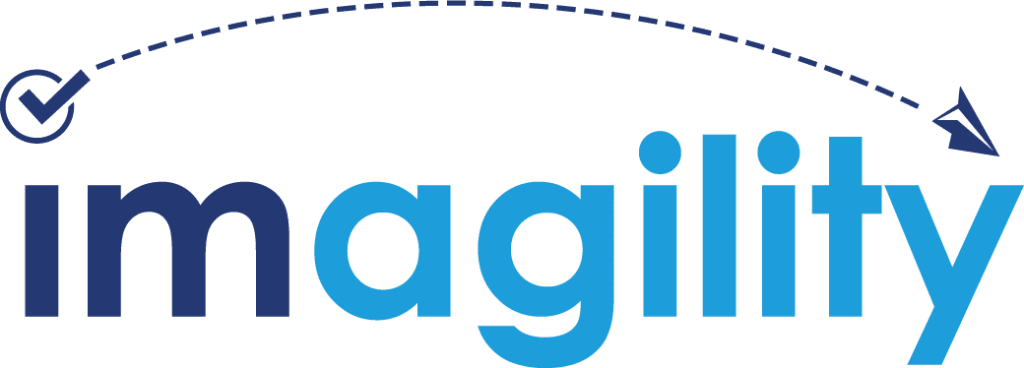
FDNS Site Visits: What & Why do they happen?
By Imagility
- Posted in Beneficiary , Blogs , Petitioner
- April 20, 2023
Share this on:
Table of Contents
What is FDNS? Types of petitions subject to FDNS site visits Why do FDNS site visits happen? What happens during FDNS site visits? Concluding thoughts
FDNS site visits are unannounced inspections by FDNS officers (on behalf of USCIS) to verify the information given in the H1B/L1 petition. This is to ensure that the information given in the petition is accurate and that employers & employees follow the same terms and conditions stated in the petition.
You may have questions like Why do FDNS site visits happen? What are the potential reasons that lead to FDNS visits? We have tried answering these questions by stating the reasons for FDNS site visits in detail.
What is FDNS?
FDNS, also known as Fraud Detection and National Security, is a kind of compliance review by FDNS officers and USCIS collaboratively to detect fraud, irregularities, or discrepancies in the petition filed for non-immigrant workers. USCIS started the administrative site visits and verification programs in 2009 to verify information in certain petitions. Through the FDNS, USCIS seeks to ensure that the petitioner and beneficiary have not tried any illegal method to secure the non-immigrant work visa and both are complying with the terms of wages, job location, work hours, etc., as stated in the LCA.
Types of petitions subject to FDNS site visits
Typically, four types of petitions fall under the FDNS site visit category.
- Religious worker petitions
- H1B petitions
- L1 petitions
- EB-5 immigrant investor program visa
It is important to note that religious worker petitions are subject to FDNS site visits before and after the adjudication, while H1B petitions and L1 petitions are subject to FDNS site visits only after adjudication. Additionally , the EB5 immigrant program visa is subject to FDNS site visits only before adjudication.
Why do FDNS site visits happen?
FDNS site visits do not occur just because there is something wrong with the petition. FDNS officers randomly select petitioners for site visits. Generally, FDNS officers visit the site only once, but if they need more information, they can do multiple site visits to complete the compliance review. Below are some of the significant variables FDNS officers work on while on FDNS site visits.
Fraud detection : FDNS site visits are primarily conducted to detect fraud/discrepancy in non-immigrant visa petitions. FDNS officers are trained to identify inconsistencies and discrepancies in the information provided in the visa petition.
Compliance with immigration laws : FDNS site visits ensure visa petitioners comply with immigration laws and regulations. The visits are intended to verify that the visa non-immigrant worker works in the job and location stated in the visa petition.
National security : FDNS site visits also play a significant role in national security. FDNS officers are trained to identify potential security threats and report them to relevant government agencies.
FDNS site visits do not take a long time and last up to a maximum of one hour.
What happens during FDNS site visits?
FDNS officers visit the site without any prior information and collect information to ensure compliance as per attestations made by the petitioner. They ask different questions to the petitioner/employee/office personnel to verify each piece of information against the petition. FDNS officer collects the following information from the site:
- Verify beneficiary and petitioner information, including supporting documents attached to the petition
- Review public records and information on the petitioning company
- Take site photographs
- Ask questions to confirm non-immigrant worker job location, work hours, duties, and wages.
- Talk to the non-immigrant worker.
After FDNS officers complete the visit, they will send the compliance report to the USCIS for review. They may refer the case to the U.S. Immigration and Customs Enforcement (ICE) for criminal investigation if they think it is required.
Concluding thoughts
Since FDNS officers select the site randomly for a visit, it is necessary to be prepared at all times and keep all compliance-related information in one place. This includes I-9 compliance, LCA, public and private access files. FDNS site visits can be intimidating, but preparation and regular internal audit drills can help companies stay prepared. Many companies engage an attorney to take care of FDNS Compliance.
Imagility helps meet employer obligations and offers a single point of reference for all compliance-related data. This includes public and private access file storage for beneficiaries, LCA posting and acknowledgment, I-9 forms, FDNS compliance, and internal audits. This allows companies to securely store and access confidential files and documents digitally, enable digital signatures, and get notifications and alerts, which improves process efficiency.
Recent Blogs
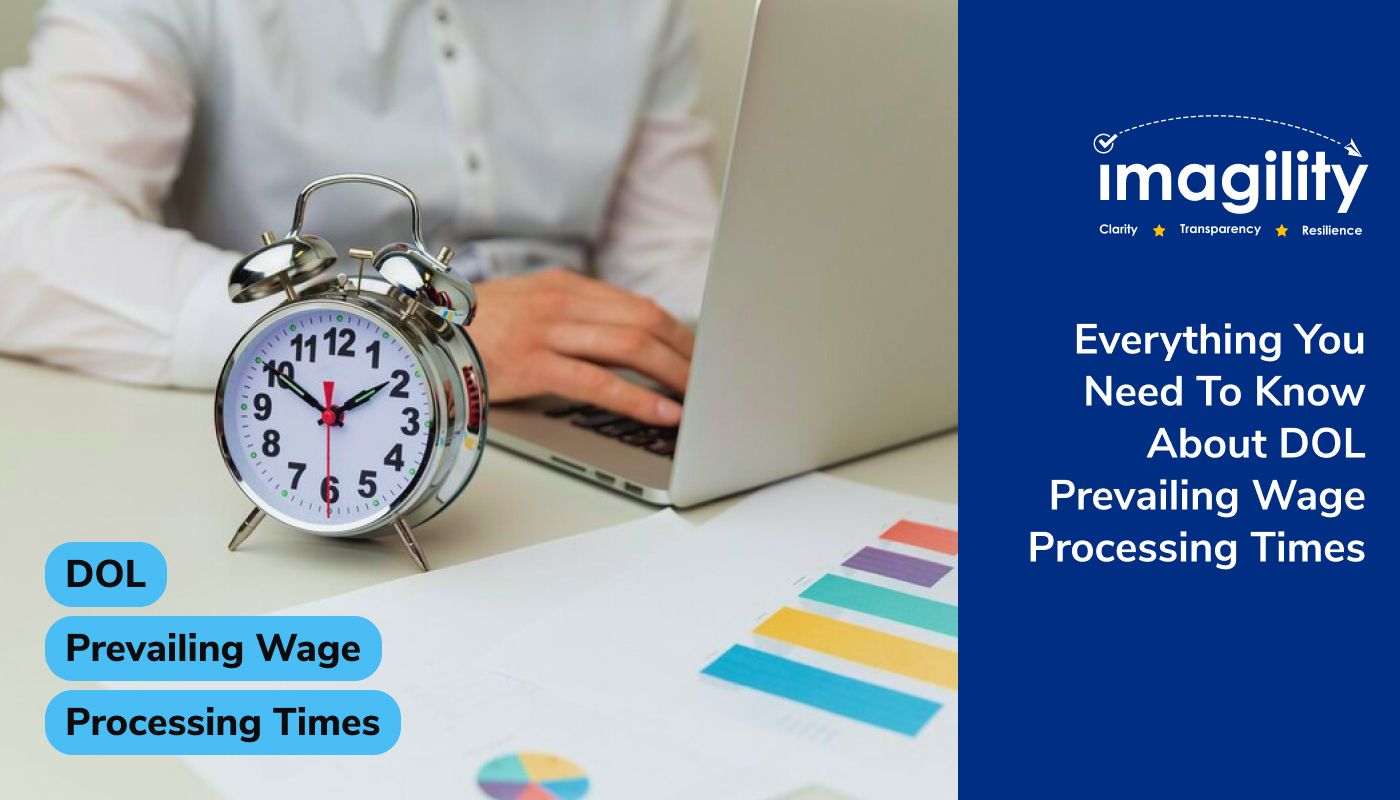
Everything You Need To Know About DOL Prevailing Wage Processing Times
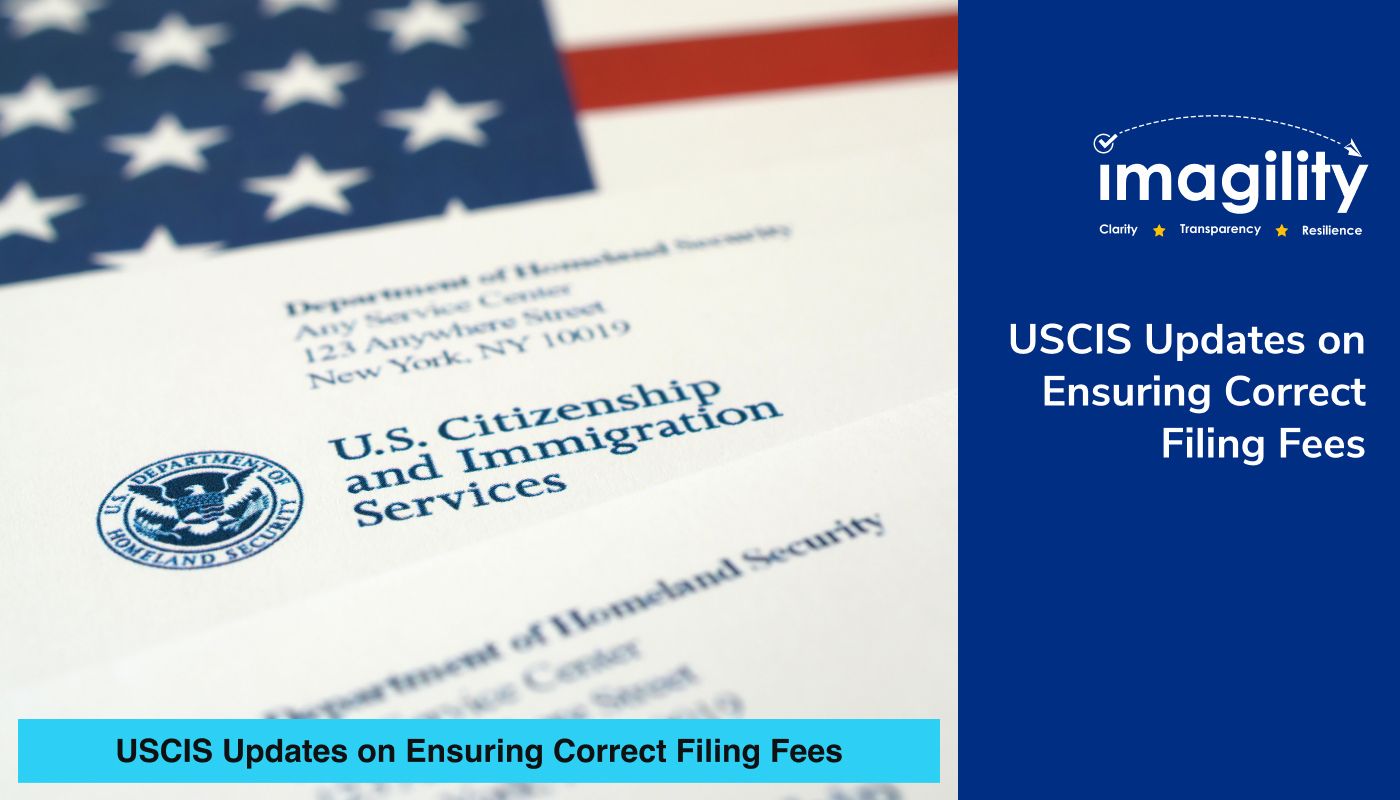
USCIS Updates on Ensuring Correct Filing Fees
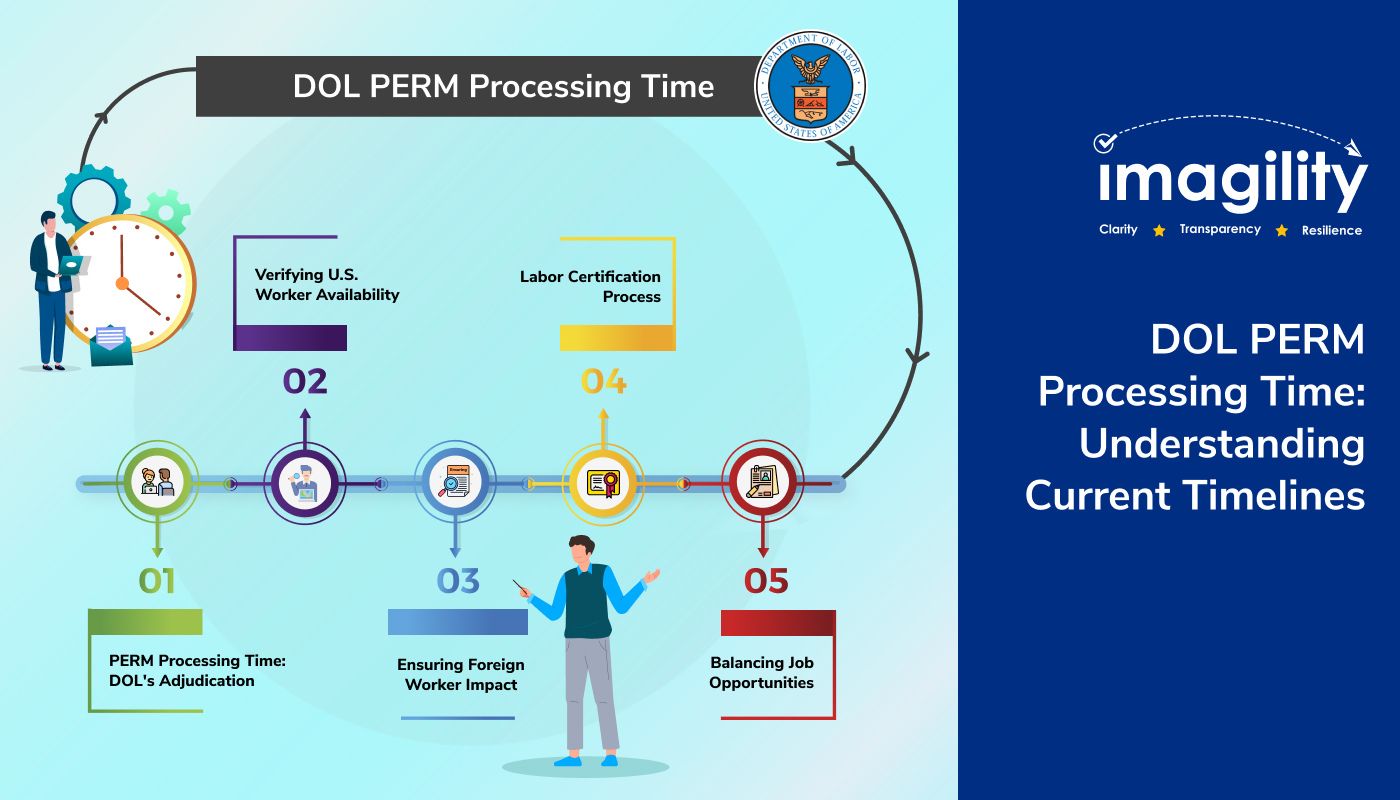
DOL PERM Processing Time: Understanding Current Timelines
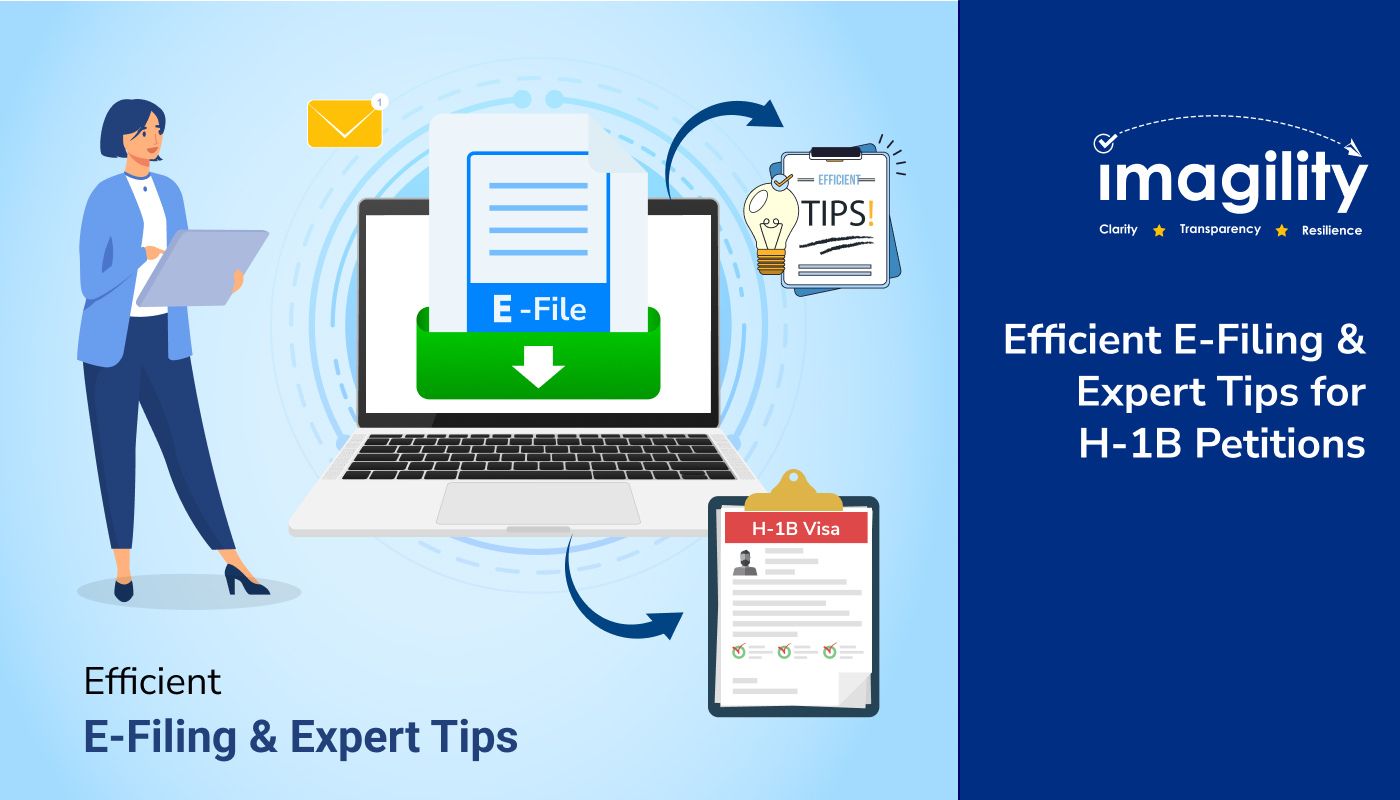
Efficient E-Filing & Expert Tips for H-1B Petitions
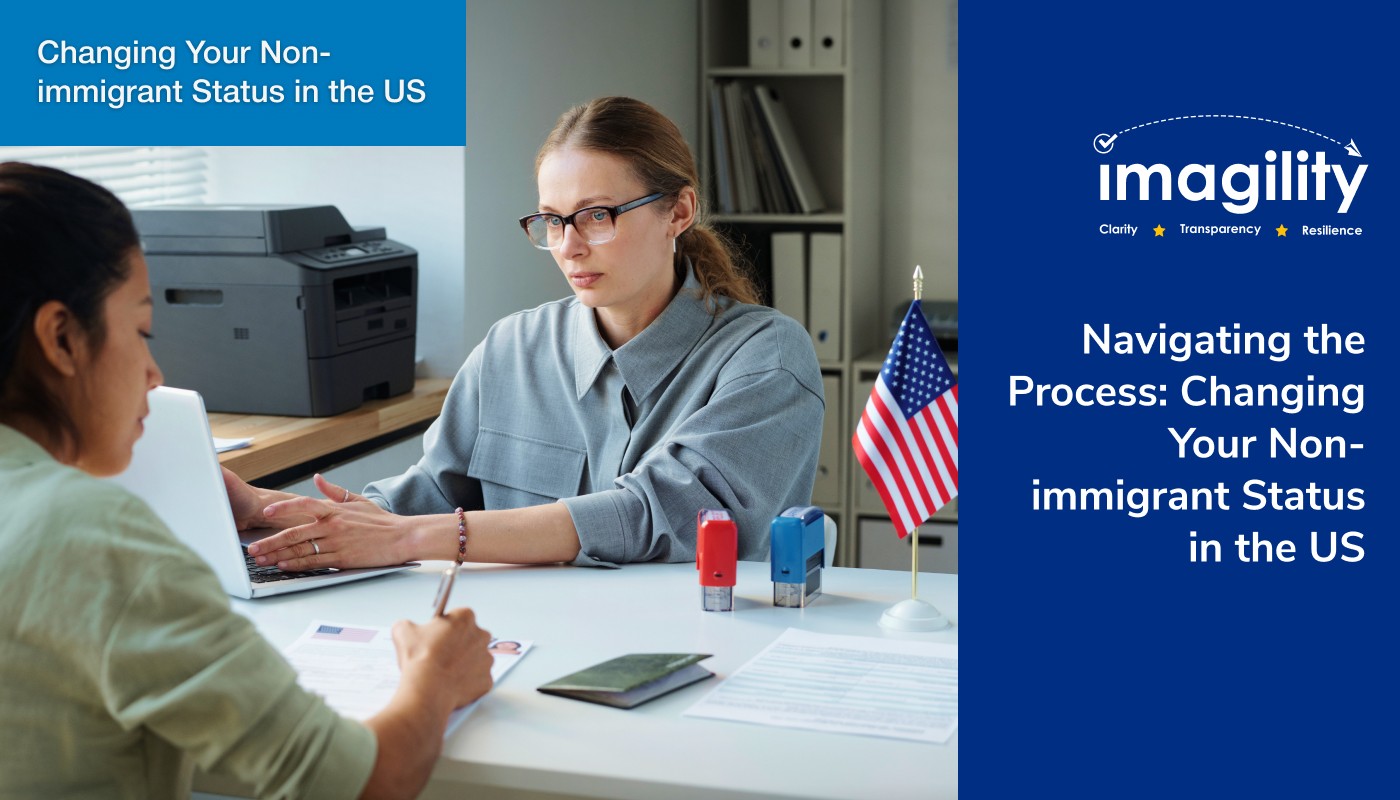
Navigating the Process: Changing Your Non-immigrant Status in the US
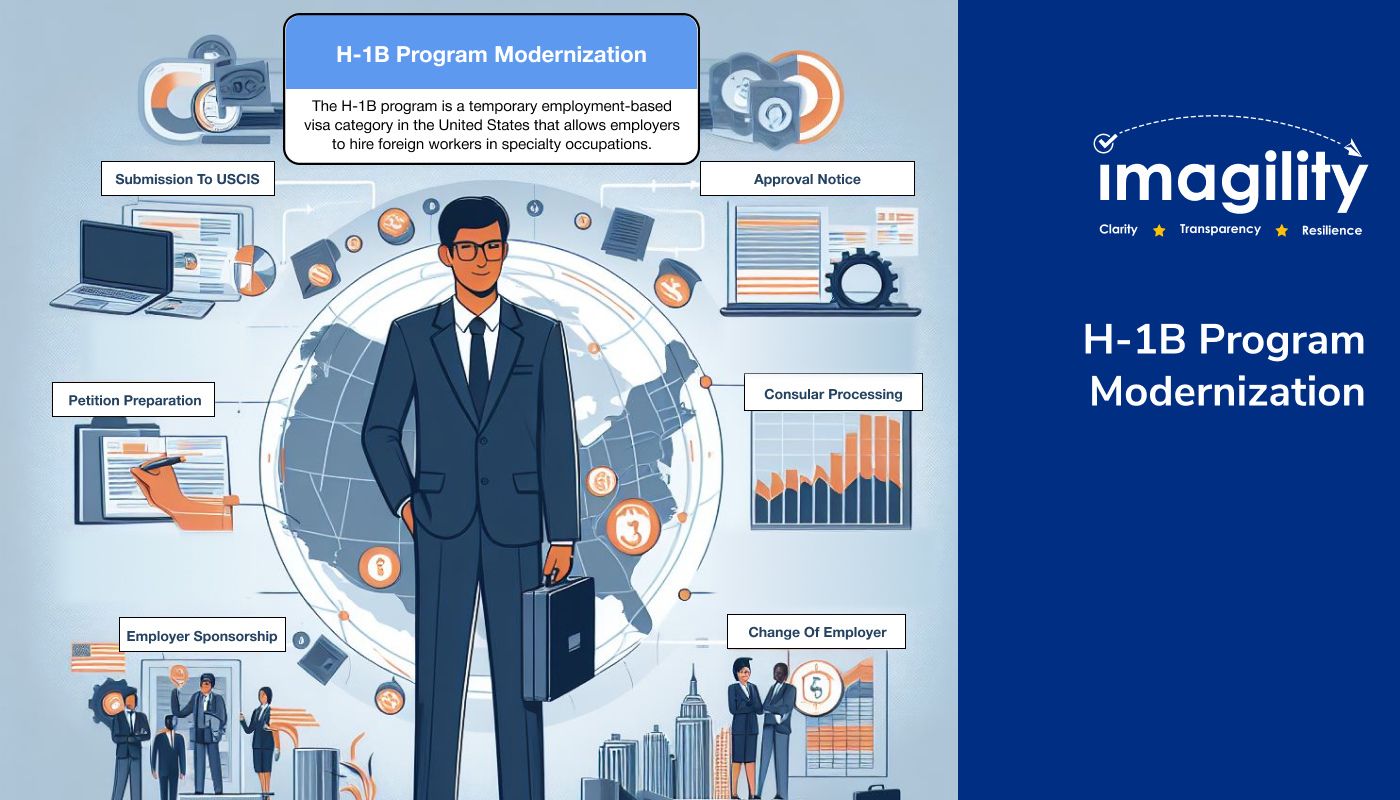
H-1B Program Modernization
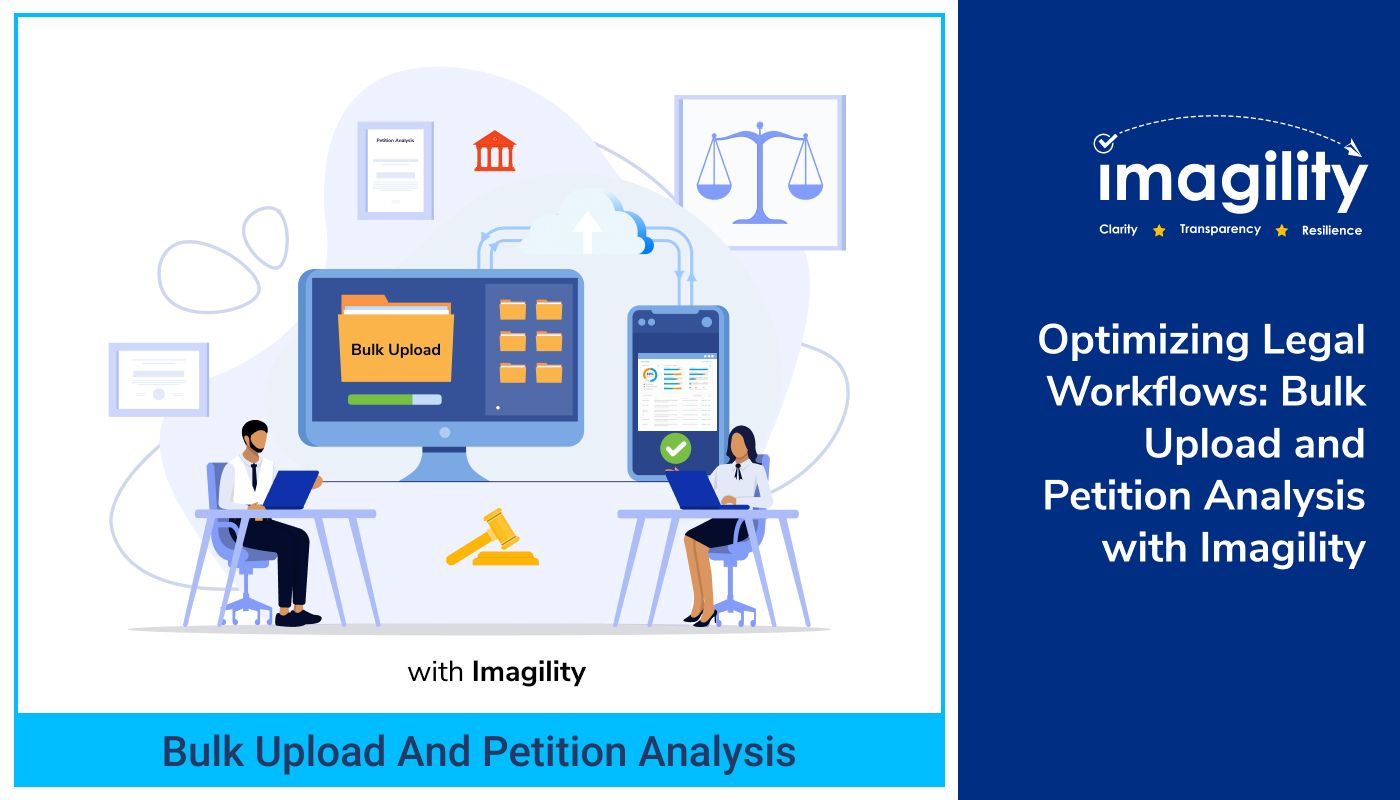
Optimizing Legal Workflows: Bulk Upload and Petition Analysis with Imagility
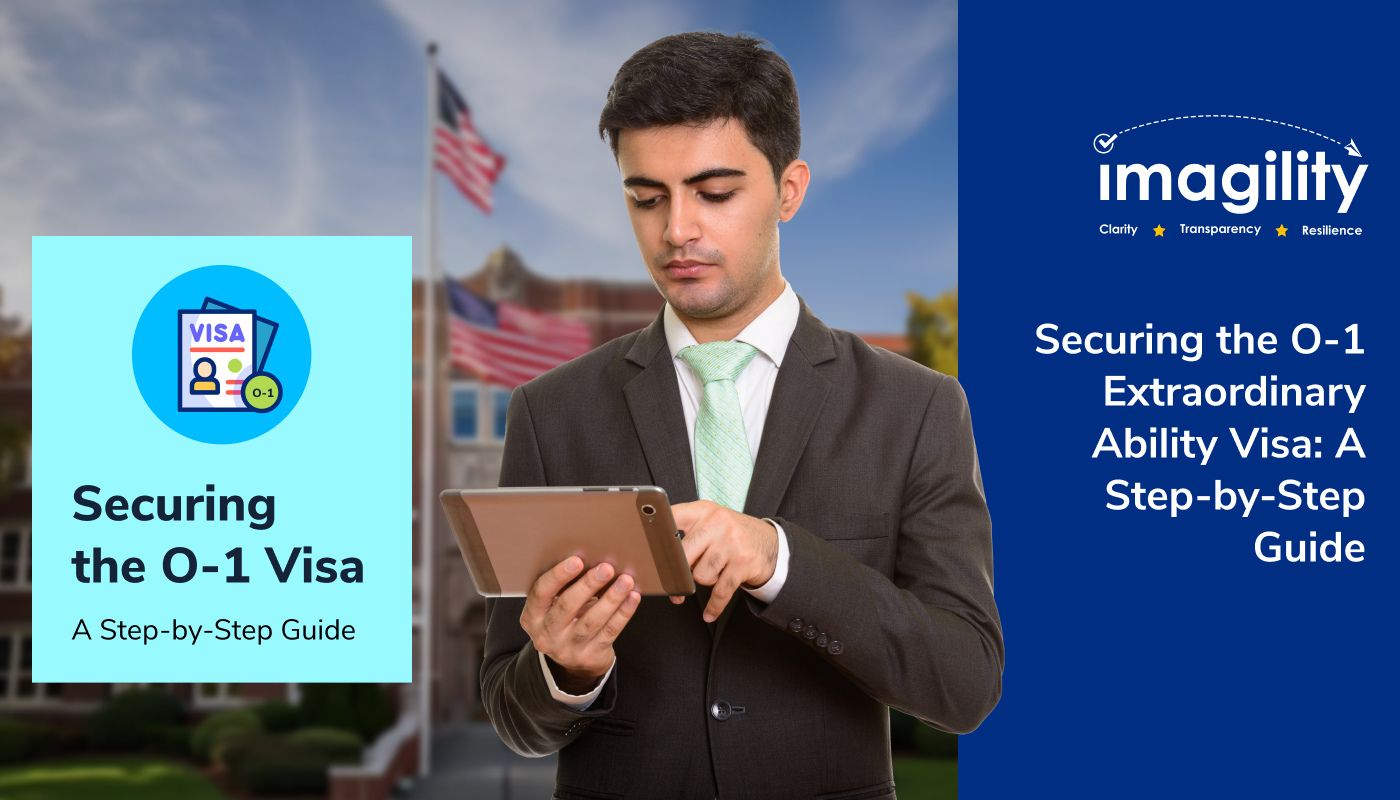
Securing the O1 Extraordinary Ability Visa: A Step-by-Step Guide
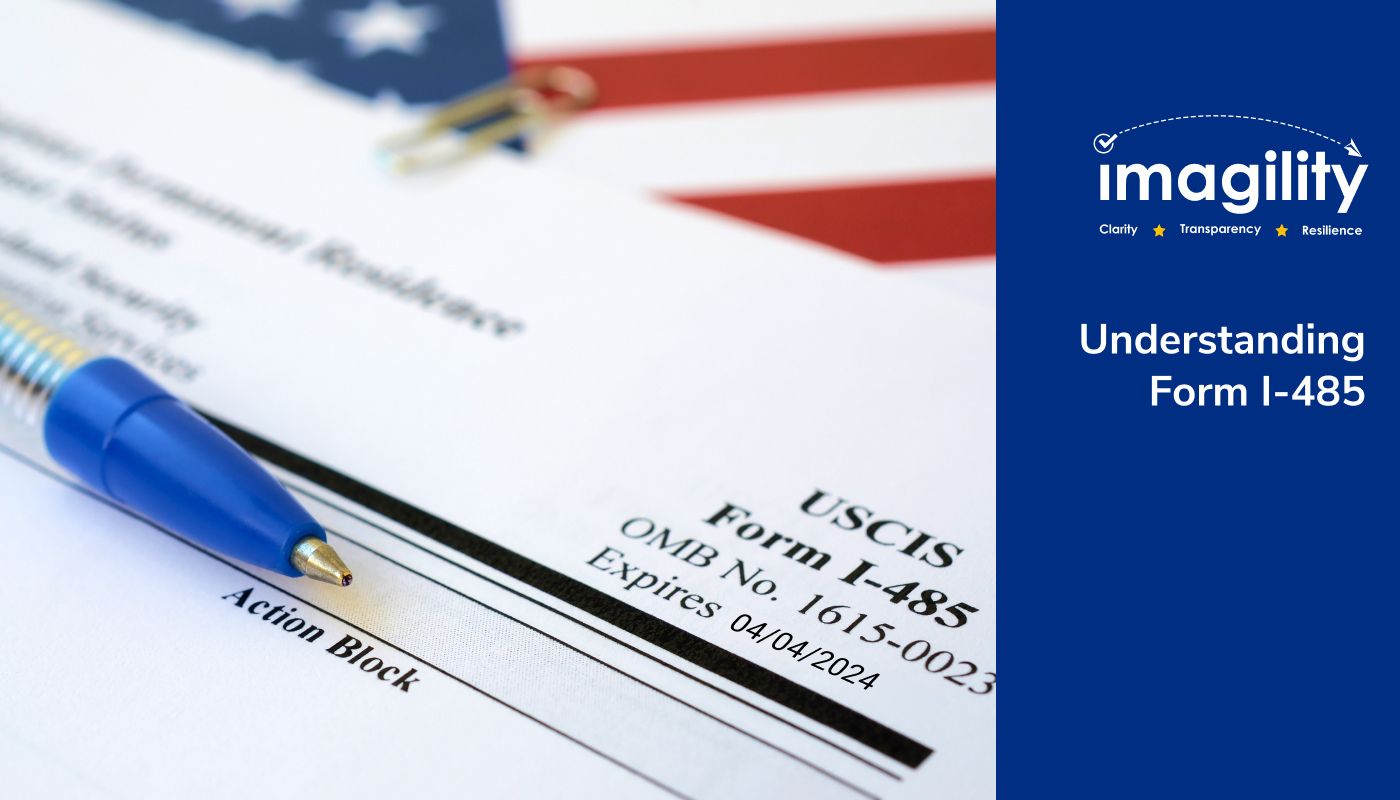
Understanding Form I-485
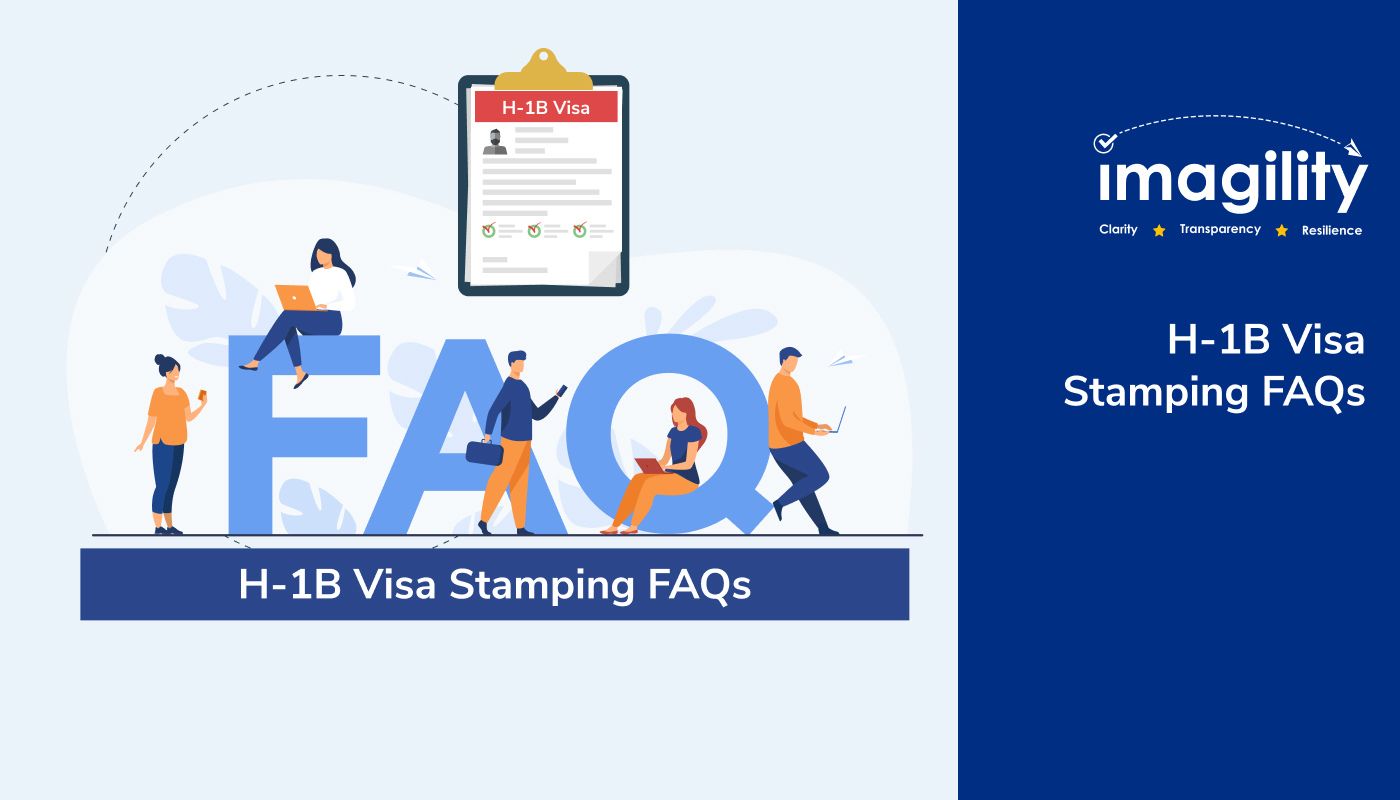
H-1B Visa Stamping FAQs

Subscribe for latest blog updates
By submitting this you will be receiving our latest updates on the blogs.
Get Started With Imagility
Save upto 6 hours a day!

Looking for a Law Firm Account?
Contact our Sales Team
Phone – 617-865-8444 Email – [email protected]
Let us know who you are?
Imagility Platform

Register for a Free account
OR Explore more Application

Lottery App

Visa Stamping App
Coming Soon…

Looking for a Company Account?

Visa Score App

Visa navigator

IMAGES
VIDEO
COMMENTS
USCIS started the Administrative Site Visit and Verification Program in July 2009 as an additional way to verify information in certain visa petitions. Under this program, immigration officers in the Fraud Detection and National Security Directorate (FDNS) make unannounced site visits to collect information as part of a compliance review.
Over the past number of years, the Fraud Detection and National Security Directorate (FDNS) have been ramping up the number of site visits it conducts in . + = , . ...
FDNS has four mission essential functions. Detect, deter, and administratively investigate immigration-related fraud. Establish guidance and oversee processes for identifying, reviewing, vetting, and adjudicating cases involving national security concerns. Develop and implement efficient screening policies, programs, and procedures.
The Office of Fraud Detection and National Security (FDNS) has been around for fifteen years but the first time most companies and attorneys hear of it is when officers show up to conduct an inspection on nonimmigrant worker visas. Their site visits are unannounced and often send companies scrambling to figure out who the officers are, what their duties and authorities are, what the company ...
Our Mission. FDNS will safeguard the integrity of the nation's lawful immigration system by leading agency eforts to combat fraud, detect national security and public safety threats, and maximize law enforcement and Intelligence Community partnerships. What We Do. Detect and deter immigration benefit fraud. Identify threats to national ...
USCIS started the Administrative Site Visit and Verification Program in July 2009 as an additional way to verify information in certain visa petitions. Under this program, Fraud Detection and National Security (FDNS) officers make visits to collect information as part of a compliance review. Most recently, F-1 STEM OPT trainees have been added ...
As part of its "site visit" program, FDNS typically asks for voluminous documentary records, and demands physical access beyond the employer's front desk in order to photograph the worksite. This blog post challenges FDNS site visits as unlawful investigative activities that are conducted in violation of the Homeland Security Act of 2002 ...
Determine whether it is an FDNS visit (rather than an Immigration and Customs Enforcement matter, Wage & Hour matter, etc.). It should be noted that FDNS site visits are generally related to H-1B and L-1 petitions, distinguishable from Immigration and Customs Enforcement ("ICE") visits, which may involve I-9 worksite audits.
Notably, the site visit program has expanded from R-1 (religious worker) and H-1B specialty occupation visa categories, to the L-1 intracompany transferee visa; in addition, a draft Executive Order leaked on January 23, 2017 called for expansion of the site visit program to all nonimmigrant visa petition categories. 1. What happens at a site visit?
specialists, and analysts, FDNS contracts with private investigation firms to conduct site visits on behalf of FDNS. FDNS has previously conducted assessments in the L-1, EB-1. 3, and R-1 programs, and now has turned its attention to the H-1B program. The vast expansion of the number of cases being sent to FDNS, and the increase in the number ...
Steven Brown is a Partner at Reddy Neumann Brown PC where he works in the Non-immigrant visa department and leads the Litigation Team. His practice covers all phases of the non-immigration visa process including filing H-1B, L-1, E-3, H-4, and H-4 EAD petitions. In the last two years, Steven has successfully handled over 1,000 non-immigrant ...
It's always better to be prepared for an FDNS site visit as it minimizes the chances of notice of intent to revoke (NOIR). Let's look at the following practices to prepare for the USCIS FDNS site visits. All your employees must know their job roles and responsibilities. Do internal audits or mock-ups to train employees for USCIS FDNS site ...
The officer will verify the details of your organization presented in the visa petition before the site visit. FDNS site visits are to confirm whether a foreign national is working at the listed location, doing the work described in the petition, earning the salary indicated in the petition, hold the educational qualifications defined in the ...
It is very important for you as an employee to have a conversation with your employer and the immigration attorney on the administrative site visits and protocol for you to follow, if there is a FDNS site visit. You should also request for a copy of your I-9 so that you understand what is in it. Step 3 - Documenting the Site Visit by FDNS ...
The FDNS officer may also request to speak with the H-1B employee at some point during or after the worksite visit. The H-1B worksite visits typically last for less than one hour. During the site visit, the FDNS officer will normally have a copy of a specific H-1B petition that was filed and will verify information contained in that petition.
FDNS established email addresses dedicated to receiving information about suspected H-1B and H-2B fraud or abuse. Anyone (including American workers and workers who suspect they or others may be the victim of H-1B or H-2B fraud or abuse) can email [email protected] or [email protected] to submit tips, alleged violations ...
Steven Brown is a Partner at Reddy Neumann Brown PC where he works in the Non-immigrant visa department and leads the Litigation Team. His practice covers all phases of the non-immigration visa process including filing H-1B, L-1, E-3, H-4, and H-4 EAD petitions. In the last two years, Steven has successfully handled over 1,000 non-immigrant ...
A USCIS Fraud Detection and National Security Directorate (FDNS) site visit is intended to ensure compliance with immigration regulations and verify information pertaining to the most recent immigration filing. These site visits can occur in person, at the office, at remote worksites (if listed on the LCA), via telephone call, or over email.
07 Mar 2018. The U.S. Citizenship and Immigration Services (USCIS) continues efforts to ensure employers of H1B and/or L-1 workers are compliant by visiting the worksites of selected foreign national workers. These site visits, which typically are carried out by Fraud Detection and National Security (FDNS) officers, generally are unannounced ...
The purpose of site inspections is to verify the information that employers provide in their immigration petitions and make sure that sponsored workers are complying with the terms of their admission. In recent years, FDNS inspectors have concentrated on H-1B employment, but USCIS has recently expanded the program to include L-1 employers as well.
This Webinar will provide an overview of the H-1B Audit and FDNS Site Visit process including finding and commenting on regulations, recent case laws and bes...
2009, FDNS has administered the Administrative Site Visit and Verification Program (ASVVP), which bolsters the compliance review process with unannounced site visits. The ASVVP includes site visits of H-1B, L-1A, religious workers, and, starting in FY 2016, EB-5 petitioners. This report analyzes data related to only H-1B and L-1A visa holders.
Generally, FDNS officers visit the site only once, but if they need more information, they can do multiple site visits to complete the compliance review. Below are some of the significant variables FDNS officers work on while on FDNS site visits. Fraud detection: FDNS site visits are primarily conducted to detect fraud/discrepancy in non ...